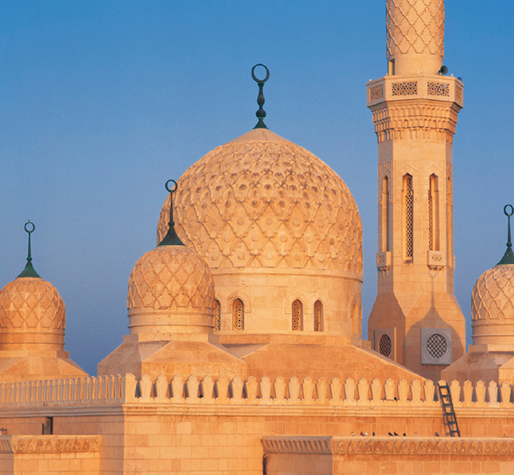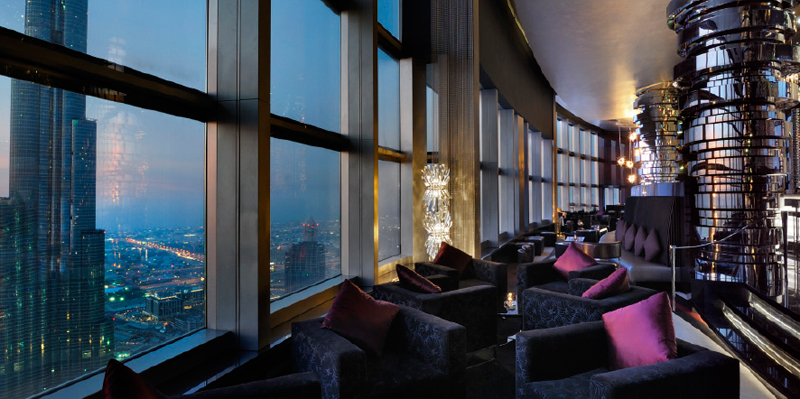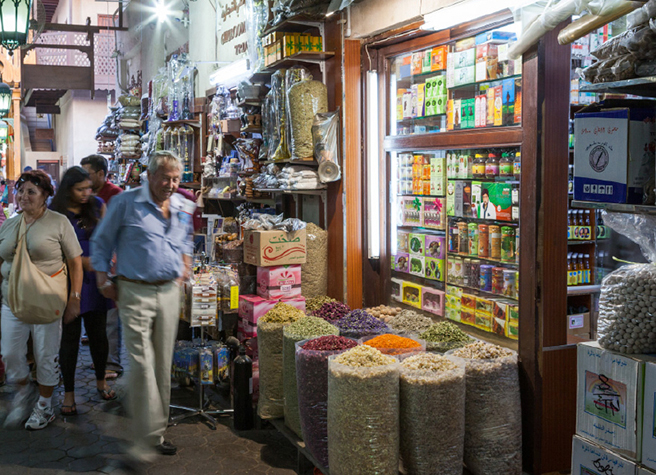Introduction to Dubai
Dubai is like nowhere else on the planet. Often claimed to be the world’s fastest-growing city, in the past four decades it has metamorphosed from a small Gulf trading centre to become one of the world’s most glamorous, spectacular and futuristic urban destinations, fuelled by a heady cocktail of petrodollars, visionary commercial acumen and naked ambition. Dubai’s ability to dream – and then achieve – the impossible has ripped up expectations and rewritten the record books, as evidenced by stunning developments such as the soaring Burj Khalifa, the beautiful Burj al Arab and the vast Palm Jumeirah island. Each is a remarkable testament to the ruling sheikhs’ determination to make this one of the world’s essential destinations for the twenty-first century.

Modern Dubai is often seen as a panegyric to consumerist luxury: a self-indulgent haven of magical hotels, superlative restaurants and extravagantly themed shopping malls. Perhaps not surprisingly the city is often stereotyped as a vacuous consumerist fleshpot, appealing only to those with more cash than culture, although this one-eyed cliché does absolutely no justice to Dubai’s beguiling contrasts and rich cultural make-up. The city’s headline-grabbing mega-projects have also deflected attention from Dubai’s massive but largely unappreciated role in providing the Islamic world with a model of political stability, religious tolerance and business acumen in action. In one of the world’s most troubled regions this peaceful and progressive pan-Arabian global city serves as the ultimate symbol of what can be achieved. Dubai also ranks among the world’s most multicultural cities, featuring a cosmopolitan cast of Emiratis, Arabs, Iranians, Indians, Filipinos and Europeans – a fascinating patchwork of peoples and languages which gives the city its uniquely varied cultural appeal.
Best places for a Dubai view
Dubai is the world’s tallest city and getting your head in the clouds is all part of the experience. The “At the Top” tour to the stunning observation deck of the Burj Khalifa is unmissable, while the best bars for a bird’s-eye view include Neos, Bar 44 and Up on the Tenth.

For the visitor, there’s far more to Dubai than designer boutiques and five-star hotels – although of course if all you’re looking for is a luxurious dose of sun, sand and shopping, the city takes some beating. If you want to step beyond the tourist clichés, however, you’ll find that Dubai has much more to offer than you might think. The old city centre serves up many fascinating reminders of Dubai’s past, including the grand old wind-towered mansions of Bastakiya and Shindagha; the stately wooden dhows, which still moor up alongside the breezy Creek; and, of course, the helter-skelter souks of Bur Dubai and Deira, piled high with traditional Arabian jewellery, scents and spices – frankincense from Somalia, bedouin necklaces from Oman, rose leaves from Iran, and much more. The city’s modern attractions are equally memorable, ranging from world-famous contemporary icons like the futuristic Burj Khalifa, the world’s tallest building – and the iconic, sail-shaped Burj al Arab through to myriad quirkier attractions – kitsch faux-Arabian bazaars, ersatz pyramids, zany themed shopping malls and a string of other wonderful, wacky and sometimes downright weird modern developments. In addition, Dubai is within easy striking distance of a number of other rewarding day-trip destinations, including Sharjah, home to some fine museums, the laidback inland oasis city of Al Ain and the vibrant megalopolis of Abu Dhabi, capital of the UAE.

The recent credit crunch hit Dubai hard, pushing the city to the verge of bankruptcy and signalling the end of some of the more extravagant mega-projects (including, for example, an artificial archipelago in the shape of the solar system and the world’s biggest theme park, complete with animatronic dinosaurs and a life-sized replica of the Taj Mahal, to mention just two). Pronouncements of the city’s demise are likely to prove premature, however, and Dubai remains one of the twenty-first century’s most fascinating and vibrant urban experiments in progress. Visit now to see history, literally, in the making.
When to visit
The best time to visit Dubai is in the cooler winter months from December through to February, with average daily temperatures in the mid-20s °C. Temperatures rise significantly from March through to April, and in October and November, when the thermometer regularly nudges up into the 30s. From May to September the city boils – July and August are especially suffocating – with average temperatures in the high 30s to low 40s (and frequently higher). Room rates at most of the top hotels fall during this period, sometimes dramatically, making the summer an excellent time to enjoy some authentic Dubaian luxury at relatively affordable prices. Rainfall is rare for most of the year, although there are usually a few wet days during January and February.